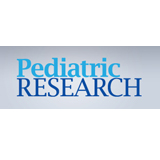
Background: Rhesus (Rh) disease and extreme hyperbilirubinemia (EHB) result in neonatal mortality and long-term neurodevelopmental impairment, yet there are no estimates of their burden.
Methods: Systematic reviews and meta-analyses were undertaken of national prevalence, mortality, and kernicterus due to Rh disease and EHB. We applied a compartmental model to estimate neonatal survivors and impairment cases for 2010.
Results: Twenty-four million (18% of 134 million live births ≥32 wk gestational age from 184 countries; uncertainty range: 23–26 million) were at risk for neonatal hyperbilirubinemiarelated adverse outcomes. Of these, 480,700 (0.36%) had either Rh disease (373,300; uncertainty range: 271,800–477,500) or developed EHB from other causes (107,400; uncertainty range: 57,000–131,000), with a 24% risk for death (114,100; uncertainty range: 59,700–172,000), 13% for kernicterus (75,400), and 11% for stillbirths. Three-quarters of mortality occurred in sub-Saharan Africa and South Asia. Kernicterus with Rh disease ranged from 38, 28, 28, and 25/100,000 live births for Eastern Europe/Central Asian, sub-Saharan African, South Asian, and Latin American regions, respectively. More than 83% of survivors with kernicterus had one or more impairments.
Conclusion: Failure to prevent Rh sensitization and manage neonatal hyperbilirubinemia results in 114,100 avoidable neonatal deaths and many children grow up with disabilities.